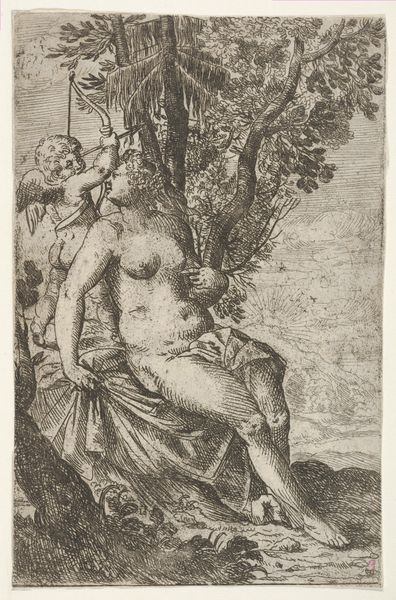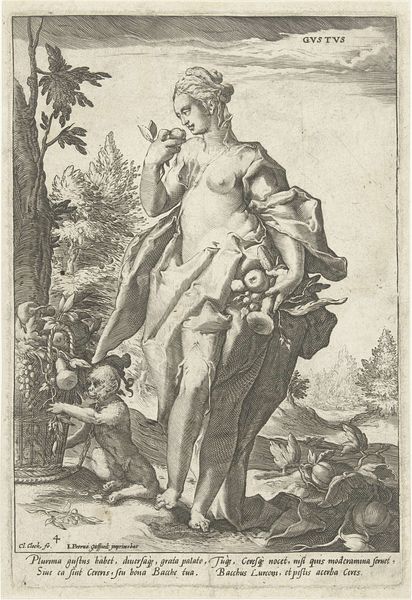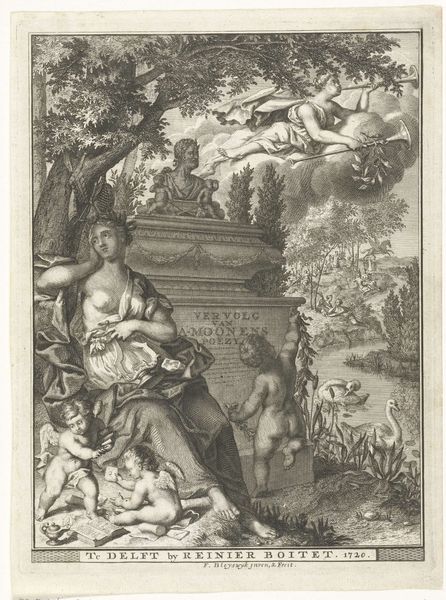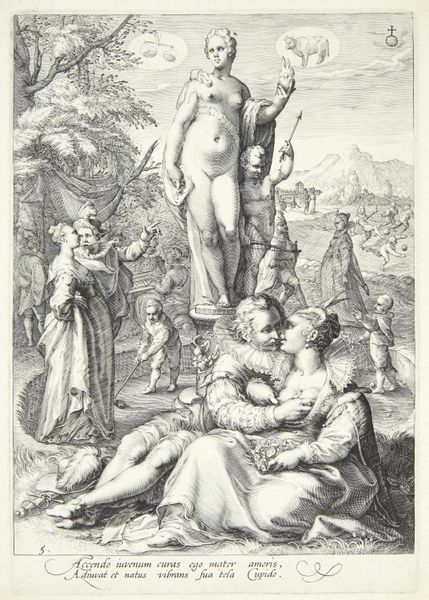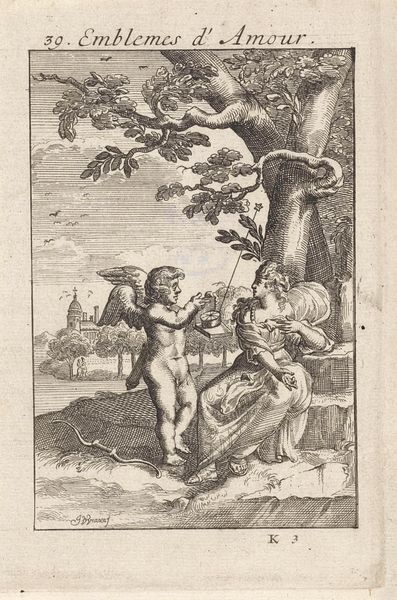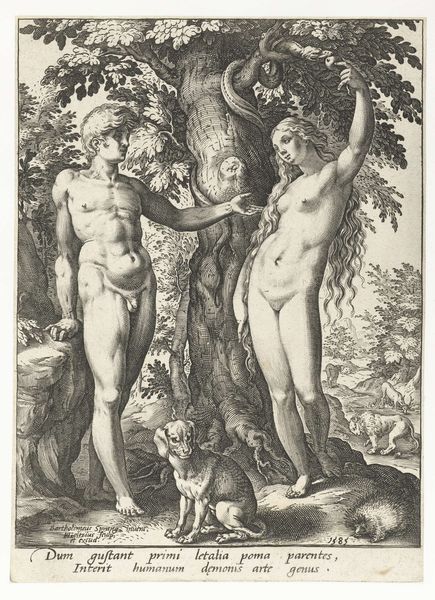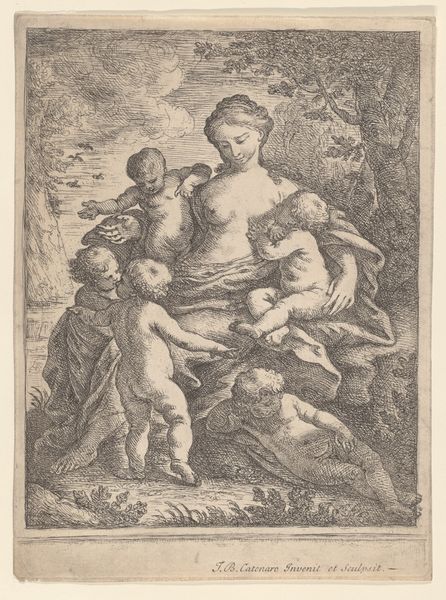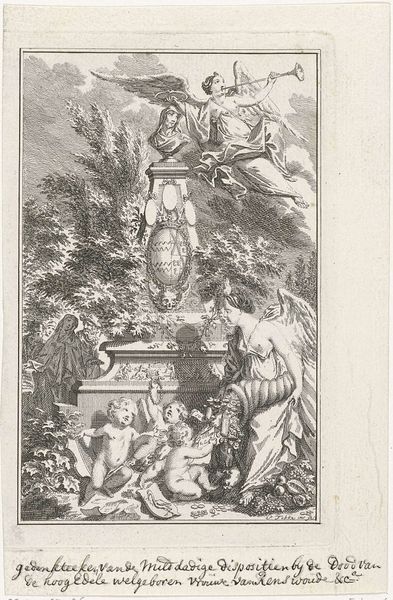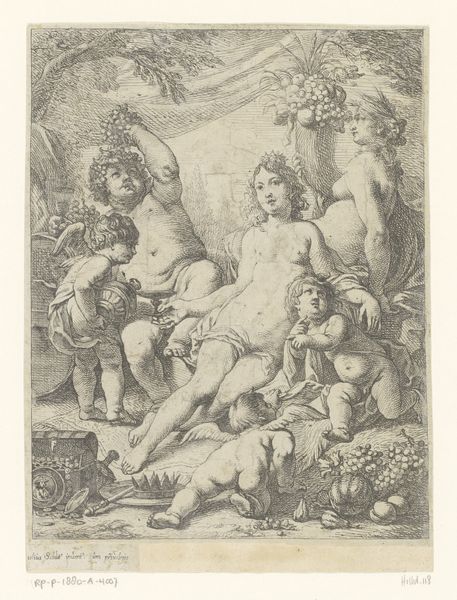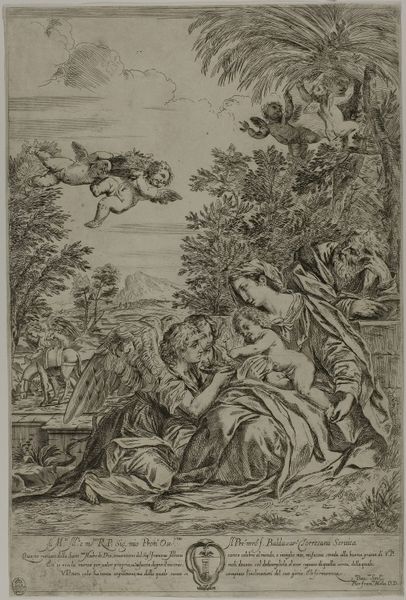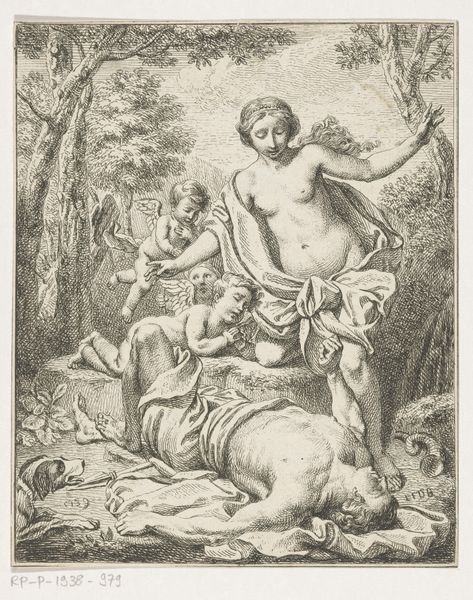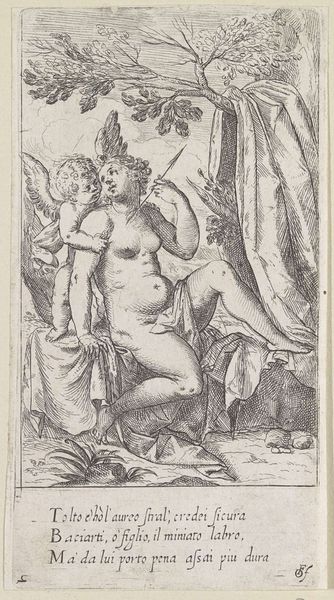
engraving
#
allegory
#
landscape
#
figuration
#
history-painting
#
northern-renaissance
#
engraving
Dimensions: height 245 mm, width 203 mm
Copyright: Rijks Museum: Open Domain
Editor: Here we have Lambert Lombard's "Spring: Venus and Cupid," an engraving from 1568. It strikes me as an odd mix—classical figures in what appears to be a Northern European landscape. What stands out to you about it? Curator: For me, it's all about the *making* of this image. Think about the material process: the labor of the engraver, H. Cock, meticulously carving into a copper plate. Every line, every texture represents a physical action, translating Lombard's design into a reproducible commodity. Does knowing that impact your understanding? Editor: It does, somewhat! Knowing it's an engraving changes how I perceive it because that was before the technologies we have now, and it would take so much more time. How would the intention to reproduce change the artistic decisions of Lombard or Cock? Curator: Precisely. This wasn't simply about aesthetic pleasure. Engravings like this circulated widely, disseminating ideas and artistic styles. Consider the marketplace: who was buying these prints, and what function did they serve in their homes? What do you make of the figures in the background? Are they relaxing in the garden? Editor: They do seem to be! Maybe that points to the growing merchant class enjoying leisurely outdoor activities, able to afford luxury prints like this that celebrate a similar lifestyle? It’s all connected: art, commerce, leisure. Curator: Exactly! This "Spring" is less about idealized beauty and more about the material conditions that allowed its production and consumption. What I love about it is that Lombard makes a traditional scene very real in that context. Editor: It gives a new meaning, knowing how that engraver enabled distribution to many and changed art for many social classes to view. Thanks!
Comments
No comments
Be the first to comment and join the conversation on the ultimate creative platform.
